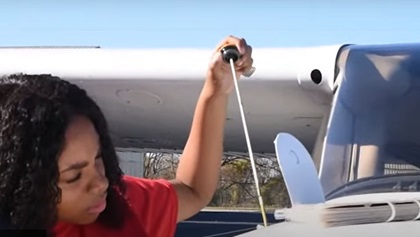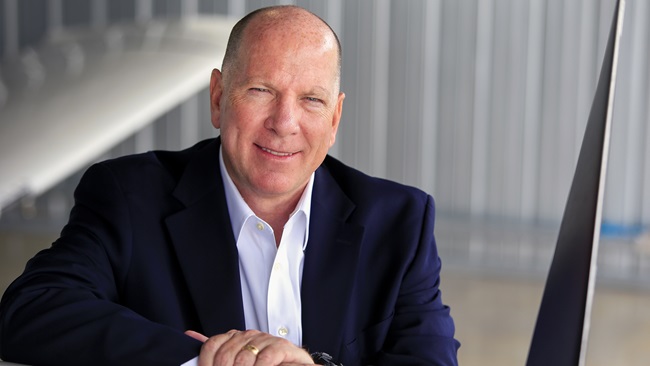AOPA's high school program changing students' lives
Members encouraged to share curriculum with educators in their area
The AOPA You Can Fly High School Aviation STEM Curriculum is changing students’ lives in more than 200 schools in 38 states.
The science, technology, engineering, and math curriculum features six courses in two pathways—pilot and drones—for students in grades nine through 12 and can be used in public, private, charter, or parochial high schools. It is also available for home school co-op programs at the high school level. Schools may choose to use a single course or a four-year career and technical education program.
“So the other day, my students did the balloon rocket activity, and if you walked by my classroom, you would have sworn we were having a party in here—it was so loud, the kids were so excited,” said Kevin Conant, an AOPA High School Aviation STEM Curriculum teacher at Sanborn Regional High School in Kingston, New Hampshire.
Students love it because the courses are fun and engaging—and they prepare them for careers in aviation.

Elexis Martin of Steubenville, Ohio, was first introduced to aviation in seventh grade by a teacher who took students to the local airport as part of an after-school program.
“I just knew that that’s what I wanted to be when I grew up, was to be a pilot because I just thought it was so interesting,” said Martin. “I stuck with it, and I’m grateful that I did.”
Martin signed up for AOPA’s curriculum in ninth grade at Steubenville High School, where she is now a senior and training to be a private pilot.
“The AOPA curriculum has motivated me and driven me to be a private pilot,” Martin said. “If I wasn’t introduced to AOPA, I don’t know how I would study for the knowledge test… I wouldn’t be able to be flying right now.”
More than 8,000 students are learning STEM lessons from the curriculum. By the end of the two pathways, students have learned the material to pass the FAA private pilot and remote pilot knowledge tests.
Teachers love the curriculum and are teaching it in more than 450 classrooms. It comes with all the plans they need to instruct, enables students to blossom, and is free. Plus, they receive free professional development through workshops, webinars, and video content. Educators are also invited to the annual AOPA High School Aviation STEM Symposium each November where they can network with other professionals and learn more about AOPA’s curriculum.
“This curriculum is a complete package. I can’t emphasize that enough,” Conant said. “Everything you need, you have in this curriculum.”
Higher education professional love it because dual enrollment credit can be an option with partnering schools, colleges, and universities.
Aviation industry leaders love the AOPA curriculum because it creates a potential pipeline for jobs right out of high school through career and technical education programs. Students in this track complete a capstone project that lets them graduate with a career portfolio, aviation business plan writing training, and more. It also is increasing interest in aviation career fields from people who are underrepresented in the field: 20 percent of the students in the curriculum are female, and 45 percent are people of color.
AOPA is accepting applications through May 31 from schools interested in teaching the curriculum in the 2021-2022 school year. AOPA members can help by reaching out to school officials in their area, telling them about the program, and encouraging them to contact AOPA’s high school curriculum specialists who will talk to them one-on-one about the curriculum and its benefits.
The You Can Fly program is funded by charitable donations to the AOPA Foundation, a 501(c)(3) organization. To be a part of the solution, visit www.aopafoundation.org/donate.



